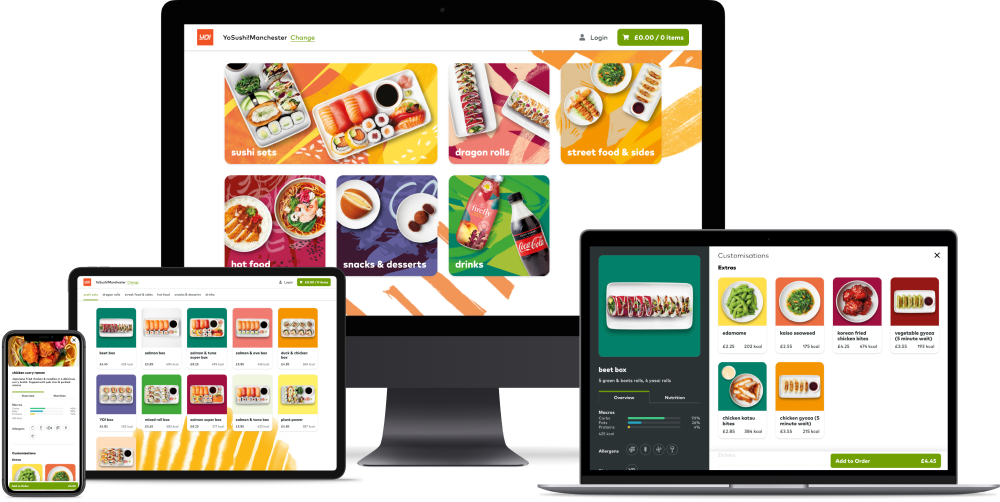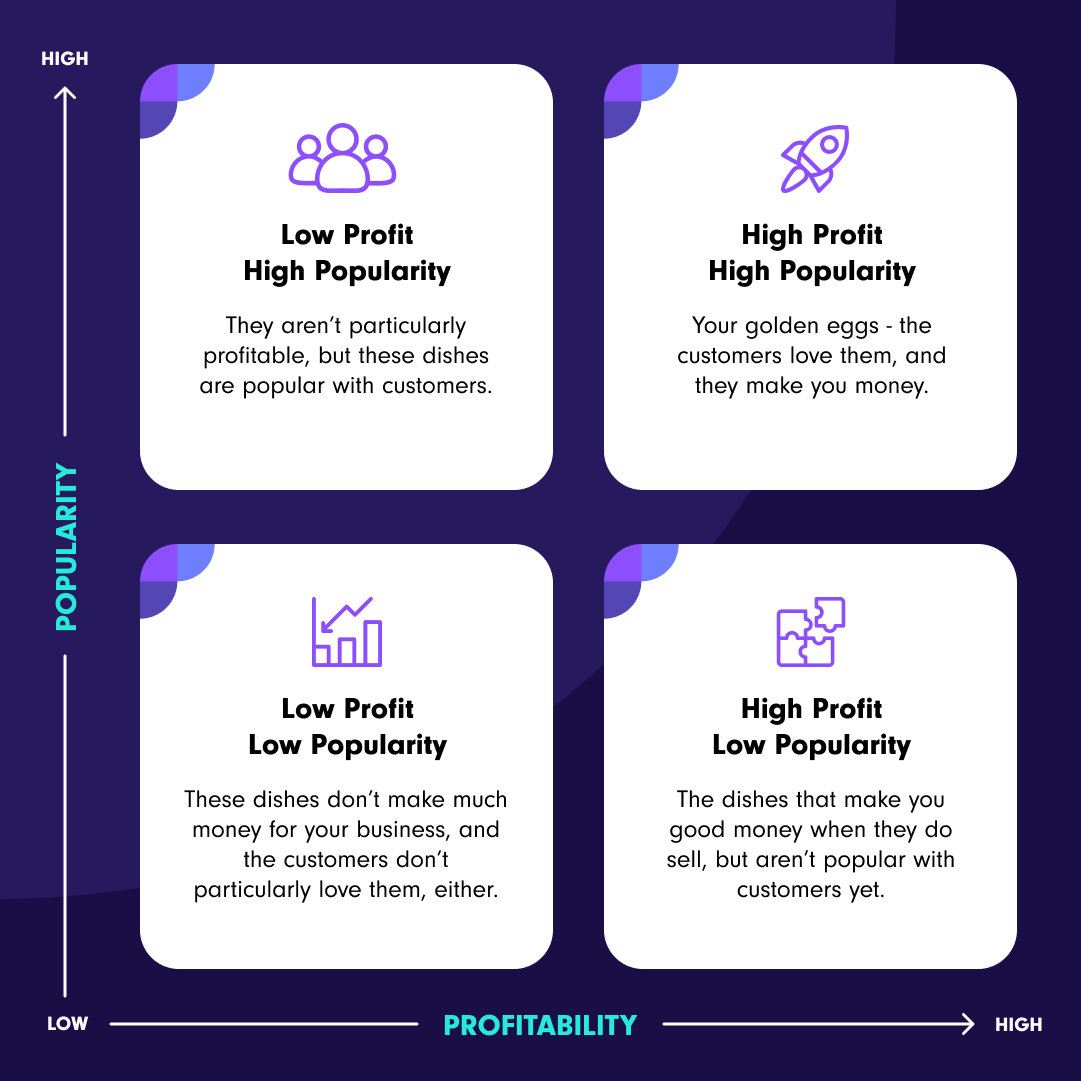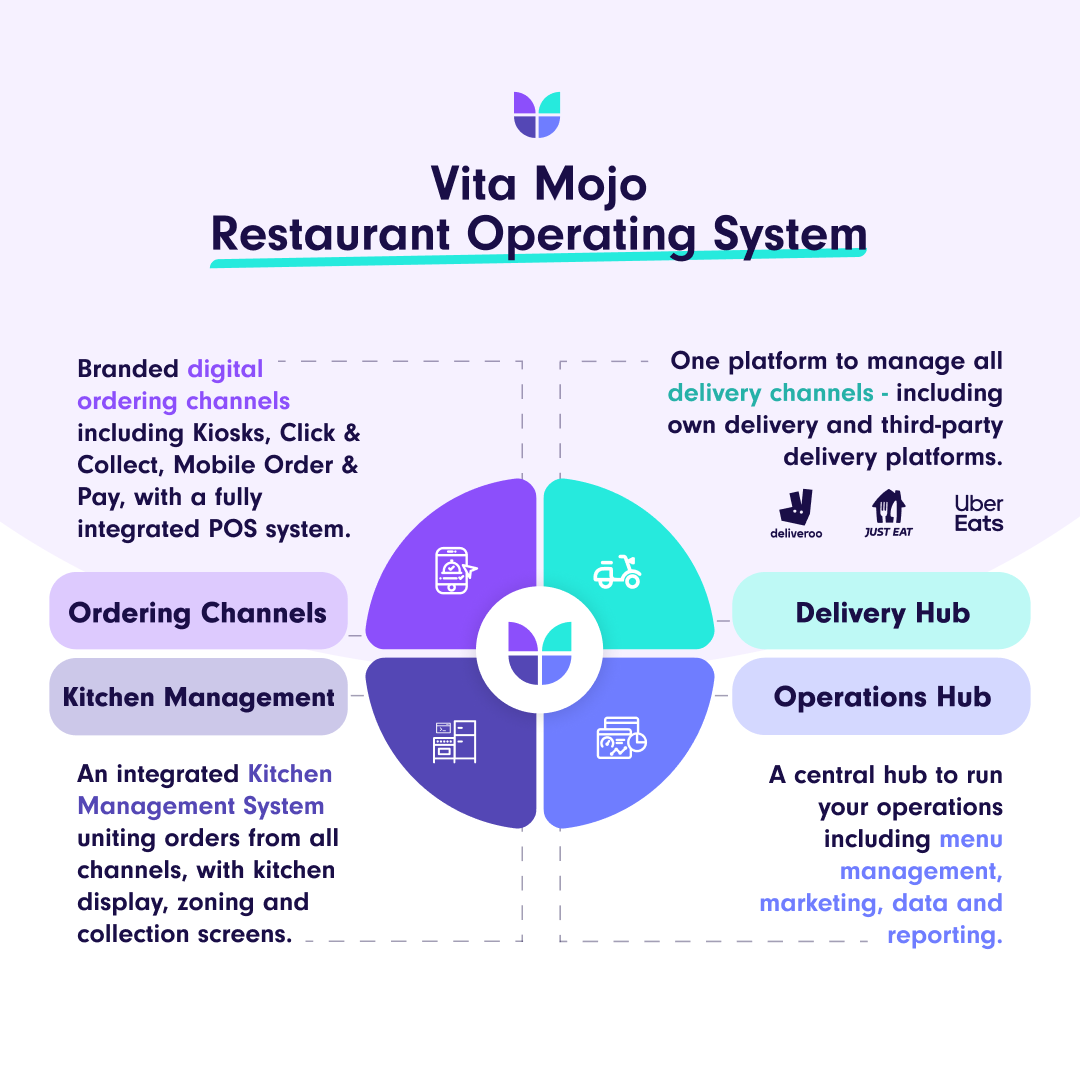Menu engineering has never been more important. With overheads spiralling and an ongoing labour shortage, maximising your profits is essential. Review your menu to understand where you can make savings and which are your most profitable dishes. Encourage your customers to spend more with menu engineering.
What’s on the menu for restaurant operators right now?
Nothing you’d particularly want to order, according to a recent report by The Guardian, with UKHospitality revealing that one in five hospitality businesses don’t believe they’ll survive the current industry crisis. Operators are having to deal with the impossible imbalance between the cost of products rising and customers having less to spend.
In this guide, we’re going to share actionable tips for increasing revenue through menu optimisation. From upselling and meal deals through to customisation, there’s a variety of changes you can make in your menu builds that will have a real impact on your bottom line.
The good news? It works.
After introducing new meal deal and upsell functionality, I am Doner increased sales of two dishes by 37% in just one month.
Time to put the you back in menu.
What is menu engineering?
Menu engineering is the process of analysing and understanding your dishes and optimising your menu to ensure you’re leveraging your most profitable menu items.

How to use menu engineering
1. Categorise your dishes by popularity and profitability
The first and most important step in menu engineering is to have a full understanding of the dishes on your menu.
To do this, you’ll need to identify two factors for each dish:
- How much profit each one makes
- How popular each dish is
Start by calculating how much each dish costs you, including ingredients and the cost of production and serving. Use this information with the price you’re charging to work out how much profit that dish is bringing.
Then use your restaurant’s analytic and reporting tools to identify the popularity of each dish with your customers during a set time – perhaps a month.

Each dish – including sides and extras – should be labelled Low Profit or High Profit, as well as Low Popularity or High Popularity. You’ll then be able to categorise each into one of the four groups below.

Keep these categories in mind with the dishes from your menu as you dig into the following tips.
2. Use digital menus to push the right dishes
There’s more benefits to digital ordering channels than the fact that customers love them (turns out 60% of customers would choose a restaurant with them vs one that didn’t).
With all your menus across your channels on one system, you have full control over your menu layouts at any time, with the freedom to change them as and when you want to.
This unlocks a whole new revenue strategy, and is the core of menu engineering.
Use the following features of digital menu building to subconsciously encourage customers to purchase the dishes that most benefit you.
Upsells
Recommend additional items when a customer adds an item to their basket
Modifiers
Open up customisation and offer modifier items on dishes
Basket recommendations
Push additional items at a checkout level based on what items are in the customer’s basket
Meal deal bundles
Set up meal deals and build the recommendation layouts to your advantage
These methods put those hero items front and centre for the customer whilst they browse. We’ve seen brands increase ATV by as much as 35% after adopting digital ordering channels.

Top tips:
- Use the above digital menu features to push the all-important High Profit and High Popularity dishes wherever possible.
- Experiment with those High Profit but Low Popularity dishes, the ones you want more customers to buy. Feature them more with the above methods and see if you can nudge them into the High Popularity category.
3. Adapt your menu to save waste costs
Hospitality is operating on an ever decreasing budget, and with everyone having to tighten their belts, any waste is bad news.
With digital, you can quickly adapt your menu to ensure you’re not wasting budget on products that frequently go to waste.
Consider whether certain dishes are still worth including in the menu, and don’t be precious if you need to take them out of rotation: taking them off the menu will save you the money you’re spending on ingredients being wasted.

Top tip:
- Monitor changes to popularity and ensure you’re not wasting menu slots (and money) on Low Profit and Low Popularity items.
4. Be reactive with digital menus
Digital menus empower you to be reactive to changes quickly.
Don’t lay out a menu and then forget about it; frequently look at the reporting that tells you how dishes are performing, and make educated changes to your menu layout based on your findings.
You can also change your menu quickly to combat inflation and unpredictable costs in the supply chain. Be reactive as the market changes and introduce dishes that use cost effective ingredients, or even turn off dishes if the ingredients are too expensive in a given week.
These quick, reactive and impactful changes can be made instantly with digital menus, without the logistics of having to change a physical one.
Top tips:
- If you notice a High Profit and High Popularity dish starting to lose popularity, consider pushing it more in upsells, or rethinking its position at the top if audience trends are changing long term.
- Make sure you’re not dedicating upsell space to items that are frequently out of stock.
5. Simplify dishes but increase customisation
By embedding customisation into your menu, you can effectively make the more expensive ingredients dishes optional extras.
For example, instead of chicken being added by default to a dish, it could be an optional upsell. This helps you mask a reduced menu, putting the customer in control of when the more expensive ingredients are included in a dish.
You can also use alternatives to the more premium ingredients, for instance trading chicken breast for thigh. Work with the kitchen to make sure this trade isn’t affecting the quality of the dish, and it will remain popular with customers whilst providing more profit.
Honest Burger’s new Smash burger is a perfect example of this. The gourmet burger brand has introduced this new dish made using a smaller, lighter beef patty with more simple inclusions. Customers can then customise their order to include premium ingredients like bacon or chilli cheese.

Top tips:
- Consider the build of Low Profit but High Popularity dishes to use alternative, more cost-effective ingredients.
- Build customisation into your menu, especially with Low Profit but High Popularity dishes where the more expensive ingredients can be optional extras.
Digital menus and your operation
Menu engineering is an attitude as much as it is a tool.
Gone are the days of having to reprint physical menus every time you want to make edits. With digital, you can see your menus as ever changing opportunities to boost ATV through small but impactful actions.

Want a first hand look at how Digital Menus help you maximise profitability and reduce complexity? Book a demo today below!
Speak to a member of the team
Talk to the Vita Mojo team today and see how our technology can elevate your brand, drive sales performance and increase efficiency across your business. Just leave a few details and we’ll get back to you as soon as possible.
